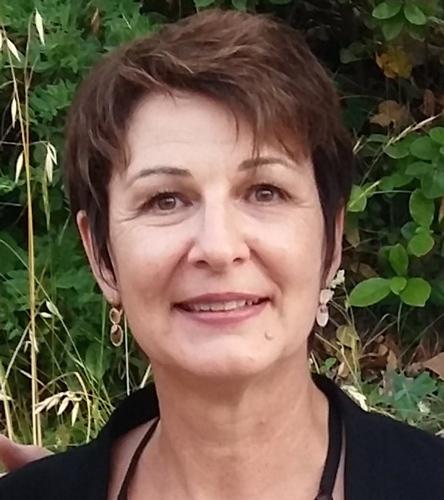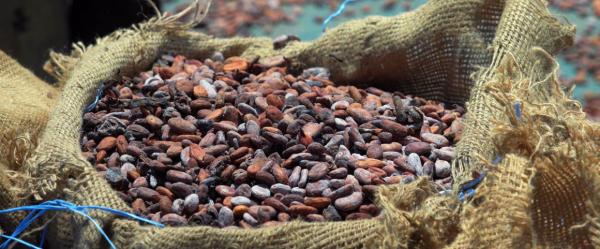Expert view 30 September 2025
- Home
- CIRAD news
- News
- Sylvie Lewicki : To develop the Sahel sustainably
Sylvie Lewicki: “To develop the Sahel sustainably, the constraints must be turned into opportunities"

In the Sahel, two out of three people live in rural areas. They depend on rain-fed agriculture and pastoralism for their livelihood. CIRAD is working towards the development of these two sectors through its research and innovation activities conducted in partnership. In this specific part of the world, what are the challenges central to these actions?
Sylvie Lewicki: The Sahel is a region that lies south of the Sahara, from Senegal to Djibouti. It includes three main zones that are characterised by their rainfall, which varies from very low to moderate.
Over and above the climate, which is both constrained and contrasted, the Sahel has numerous problems: land there is fragile, agricultural soils are being degraded, and growing competition for resources is threatening the peaceful coexistence of communities. Climate change is exacerbating this situation.
However, while this image of the Sahel is common, that of a land of opportunities, capable of meeting these challenges, is equally unquestionable. In order to sustainably develop the Sahel, we need to work to turn the constraints into opportunities.
By promoting traditional farming practices and enhancing them with innovations produced by research, based on the principles of agroecology, the countries of the Sahel can ensure sustainable agriculture prospers. Giving attractive jobs to the millions of young African people is also a key challenge. These young people are a resource and an incredible opportunity!
What are the key drivers of development upon which CIRAD focuses its research efforts in the Sahel?
S. L.: The first driver of development, which underpins all the others, is education and training for the 380 million young people who will enter the job market by 2030, at a rate of 30 million every year! The challenge for the Sahel and more broadly for sub-Saharan Africa as a whole will be to provide them with jobs and income. This is crucial, and is why training is central to CIRAD’s concerns. The goal is to build the capacities of research institutions, but also of professional and non-governmental organisations. We also seek to contribute to modernising vocational training by promoting research findings. Innovation processes are one research area, but some projects go as far as supporting the creation of innovative companies. We are constantly working to ensure a continuum between knowledge and innovation production and training, which is a key driver of impact and development.
Two thirds of these new workers will live in rural areas. Agriculture will therefore play a pivotal role in access to the job market for these young people, in the development of the countries of the Sahel, and in the stability of the continent.
Another key driver of development in the Sahel is hydro-agricultural infrastructure and irrigated farming. Contrary to what might be assumed, water is present in the very heart of the Sahel with some large rivers: the Senegal River, the Niger River and the Logone-Chari River, as well as lakes such as Lake Chad. Water management helps to improve the stability of agricultural production and to intensify and diversify crops, which is a crucial aspect of food security and nutrition for people in the Sahel.
In the Sahel, CIRAD also focuses its efforts on agroecology to improve agro-sylvo-pastoral systems. But it is also important to foster high value added sectors and markets.
A particular concern is promoting products from pastoralism, especially milk. Land issues are another research area for CIRAD. These include the management of conflicts between sedentary farmers and nomadic herders.
Finally, animal health issues are still prevalent in the Sahel. Nevertheless, it is important to note major successes such as the control of trypanosomiasis, a disease carried by the tsetse fly, or Peste des Petits Ruminants, which have enabled the development of livestock farming in sub-Saharan Africa. With the recent elimination of the tsetse fly in the Niayes region in Senegal, for example, an increase in cattle production equivalent to 2.8 million euros per year is expected.
From an institutional viewpoint, how is CIRAD involved in the Sahelian zone?
S. L.: The historical presence of CIRAD in the Sahel countries follows on from that of the research institutes that led to its creation – the Institut de Recherche sur les Huiles et Oléagineux (IRHO - Research Institute on Oils and Oilseeds) in Bambey, Senegal, the Institut de Recherche du Coton et des Textiles (IRCT - Research Institute on Cotton and Textiles) in Bébédjia, Chad, created in the 1940s, and the veterinary medicine laboratories in Fracha, Chad, and Dakar-Hann, Senegal, created in the early 1950s. These are the oldest, but there are others.
Today, with more than 40 of CIRAD’s senior scientists posted there, the countries of the Sahel are the part of the world with the highest number of expatriates attached to the establishment. This zone is a priority for France, but also for Europe and the international community as a whole. In the Sahel, CIRAD works with its long-standing partners, which include the Institut d’Économie Rurale (IER - Rural Economics Institute) in Mali, the Institut de l’Environnement et Recherches Agricoles (INERA - Environmental and Agricultural Research Institute) in Burkina Faso, and the Institut Sénégalais de Recherches Agricoles (ISRA - Senegal Agricultural Research Institute). Together they seek to meet the rural development and food security objectives set by the Sahel Alliance*.
Recently, in this context, CIRAD and its partners in the Sahel signed the Ouagadougou Declaration for agricultural research in the Sahel.
*Created in 2017 at the initiative of France and Germany, the Sahel Alliance is comprised of 12 donors. It is based on cooperation between the major development partners and the G5 Sahel states in order to accelerate the implementation of development actions corresponding directly to the needs expressed by local populations. It operates in Burkina Faso, Mali, Mauritania, Niger and Chad.



























